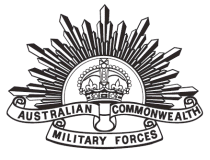

| Regimental number | 324 |
| Place of birth | Glenelg, South Australia |
| School | Murray Bridge Public School, South Australia |
| Religion | Presbyterian |
| Occupation | Stockman |
| Marital status | Single |
| Age at embarkation | 19 |
| Height | 5' 6.5" |
| Weight | 147 lbs |
| Next of kin | Alfred J Pulleine, Murray Bridge, South Australia |
| Previous military service | Served for 6 months in the 75th Infantry, Citizen Military Forces (area subsequently declared exempt under Compulsory Military Training scheme). |
| Enlistment date | |
| Place of enlistment | Morphettville, South Australia |
| Rank on enlistment | Private |
| Unit name | 9th Light Horse Regiment, B Squadron |
| AWM Embarkation Roll number | 10/14/1 |
| Embarkation details | Unit embarked from Melbourne, Victoria, on board Transport A10 Karroo on |
| Rank from Nominal Roll | Private |
| Unit from Nominal Roll | 9th Light Horse Regiment |
| Other details from Roll of Honour Circular | 'He was in the Cadets, but had exemption from Military Service owing to a weakness (internal), but as soon as war broke out, he went down to camp, and assisted to break in horses, passed his shootingt test, and medical and wrote for my permission to enlist.' (details from father) |
| Fate | Killed in Action |
| Age at death from cemetery records | 19 |
| Place of burial | No known grave |
| Commemoration details | The Lone Pine Memorial (Panel 9), Gallipoli, Turkey The Lone Pine Memorial, situated in the Lone Pine Cemetery at Anzac, is the main Australian Memorial on Gallipoli, and one of four memorials to men of the New Zealand Expeditionary Force. Designed by Sir John Burnet, the principal architect of the Gallipoli cemeteries, it is a thick tapering pylon 14.3 metres high on a square base 12.98 metres wide. It is constructed from limestone mined at Ilgardere in Turkey. The Memorial commemorates the 3268 Australians and 456 New Zealanders who have no known grave and the 960 Australians and 252 New Zealanders who were buried at sea after evacuation through wounds or disease. The names of New Zealanders commemorated are inscribed on stone panels mounted on the south and north sides of the pylon, while those of the Australians are listed on a long wall of panels in front of the pylon and to either side. Names are arranged by unit and rank. The Memorial stands over the centre of the Turkish trenches and tunnels which were the scene of heavy fighting during the August offensive. Most cemeteries on Gallipoli contain relatively few marked graves, and the majority of Australians killed on Gallipoli are commemorated here. |
| Panel number, Roll of Honour, Australian War Memorial | 7 |
| Miscellaneous information from cemetery records | Parents: Alfred and Anna PULLEINE, Murray Bridge, South Australia. Native of Glenelg, South Australia. Commemorated on a roll of honour recording those choristers of St Peter's Church of England, Glenelg, South Australia, who lost their lives in the Great War. |
| Family/military connections | Father wrote: ' ... he was a grand-nephew of major Pulleine, of the gallant 24th who was in command, and who was killed at Isandlwana, 24th January 1879. Major Pulleine's nephew was killed in action Sept 1916.' |
| Other details |
War service: Egypt, Gallipoli Embarked Alexandria to join the Mediterranean Expeditionary Force, Gallipoli, 16 May 1915. Wounded in action, 24 June 1915 (shrapnel; wound, head); returned to duty, 24 June 1915. Missing in action, 29 August 1915; Court of Enquiry, Broadhead, Serapeum, Egypt, 26 April 1916, determined fate as killed in action, 29 August 1915. Medals: 1914-15 Star, British War Medal, Victory Medal |